This set of Electronic Devices and Circuits Question Bank focuses on “Limiting and Clamping Circuits and Some Special Types of diodes”.
1. Which of the following circuits can be used as limiter or clamper or both?
a)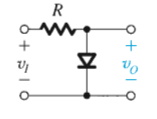
b)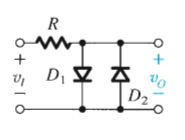
c)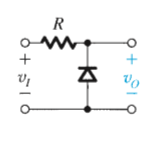
d) All of the mentioned
View Answer
Explanation: Each of the circuit can be either as a clamper or limiter or both.
2. The V0 vs VI curve for the below circuit is
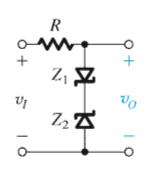
a) 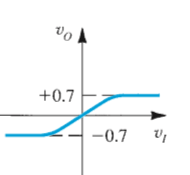
b) 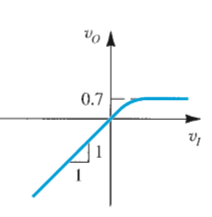
c) 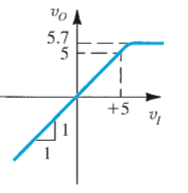
d) 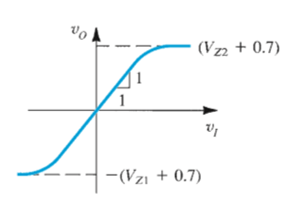
View Answer
Explanation: Only this curve represents the characteristics correctly.
3. For the circuit and the input signal shown which of the following is true for the output voltage?
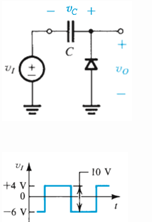
a) The output waveform is a square wave with lowest peak clamped to 0V
b) The output wave is a square wave with lowest peak clamped to -6V
c) The output waveform is a square wave with highest peak clamped to 4V
d) The output waveform is a straight line with the value of output voltage equal to 10V
View Answer
Explanation: It is a clamped capacitor circuit.
4. Which of the following is not true for the duty cycle of a waveform?
a) Duty cycles can be used to describe the percent time of an active signal in an electrical device
b) Duty cycle can be used to determine the percentage of the time a signal is active
c) 60% duty cycle means that the waveform is active for 40% of the total time
d) 50% duty cycle means that the waveform is non-active for 50% of the total time
View Answer
Explanation: 60% duty time means that a signal is active for 60% of the total time.
5. The maximum and the minimum voltage across the diode D1 respectively is
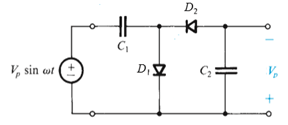
a) 2Vp and 0V respectively
b) 0V and -2Vp respectively
c) Vp and -Vp respectively
d) 2Vp and Vp respectively
View Answer
Explanation: It is a voltage doubler circuit.
6. Limiting and clamping circuits are employed in
a) FM transmitters
b) Television receivers and transmitter
c) Production of various signal waveforms such as trapezoidal, square or rectangular waves
d) All of the mentioned
View Answer
Explanation: All of the given are uses of limiting and clamping circuits.
7. Which of the following is not true for a Schottky-Barrier Diode (SBD)?
a) It is formed by bringing metal into contact with a moderately doped n-type semiconductor material.
b) In the SBD, current is conducted by mainly by minority carriers.
c) The forward voltage drop of a conducting SBD is lower than that of a pn-junction diode.
d) SBD are used in the design of a special form of bipolar-transistor logic circuits
View Answer
Explanation: Current is conducted largely by electrons which are majority current carriers.
8. Photodiodes are part of
a) Optoelectronics
b) High Intensity Discharge
c) Low pressure Discharge
d) None of the mentioned
View Answer
Explanation: Optoelectronics are also called photodiodes.
9. Which of the following is true for LEDs
a) The light emitted by a LED is inversely proportional to the current flowing through the diode
b) LED operate in a manner opposite to the working of the optoelectronics or photodiodes
c) LED cannot be used to generate coherent source of light
d) None of the mentioned
View Answer
Explanation: The working of the optoelectronics is opposite to that of the LEDs.
10. Optoisolator is
a) A combination of LED and varactor in the same package
b) A combination of a varactor and photodiode in the same package
c) A combination of LED and a photodiode in the same package
d) A combination of photodiode and Schottky-Barrier Diode in the same package
View Answer
Explanation: By definition, an optoisolator is a package containing both LED as well as a photodiode.
Sanfoundry Global Education & Learning Series – Electronic Devices and Circuits.
To practice Electronic Devices and Circuits Question Bank, here is complete set of 1000+ Multiple Choice Questions and Answers.
If you find a mistake in question / option / answer, kindly take a screenshot and email to [email protected]
